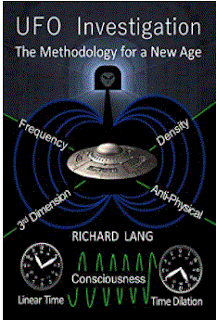Kurth
My last post concerned new information from former Lt. Col. Douglas Kurth, which he provided to U.S. researcher Christian Lambright, about the November 2004 U.S.S. Nimitz encounter. This information was extracted from a new May 2021 paper, by Lambright, titled "2004-2021: Behind the Curtain."
I now wish to explore more of Lambright's paper and the contents concerning his views on the origins of the Advanced Aerospace Threat Identification Program (AATIP.)
AATIP
Firstly, Lambright provides us with the standard version of events, namely that the Reid/Bigelow collaboration started with a Defense Intelligence Agency official, with an interest in the so called Skinwalker ranch."
A 'credible source with direct inside knowledge" informed Lambright that Bigelow had been told by Harry Reid about the Nimitz encounter at an early stage following the incident. The same source then advised that Bigelow shared this information with "Hal Puthoff and one or two others" in 2005. However, it wasn't until former Lt. Col. Douglas Kurth went to work for BAASS in 2007, that "the Reid/Bigelow operation suddenly came to life." Hal Puthoff, speaking at the 2018 SSE/IRVA conference in Las Vegas, confirmed that the AATIP was created in June 2007.
Lambright correctly points out that:
"For many reasons that are still not clear, by mid-2009 something changed causing Harry Reid to request the formation of a very highly classified Special Access Program called AATIP." In part of Reid's letter to the U.S. Department of Defense AATIP is aid to have been "commissioned" and had made "much progress."
Kit Green
Lambright then goes on to discuss Kit Green's role in all of this, and concludes:
"As for who 'AATIP' referred to, a reasonable conclusion would be that it was a term created by Harry Reid as a reference to a core group of Kit Green, Hal Puthoff, Eric Davis, Reid and Bigelow who began their research effort in 2007."
Lambright suggests that:
"This would explain why the term AATIP is basically used as an all-inclusive reference for everything that began in mid-2007 and continued under the 'management' of Lue Elizondo through 2017. AATIP was never 'officially' a Pentagon program, which would explain why the DoD seems to have no record of Elizondo officially directing it."
It is an intriguing revision of accepted AATIP history. Lambright is to be congratulated for writing this paper. I look forward to additional information from his communications with Douglas Kurth and his "credible source with direct inside knowledge."








